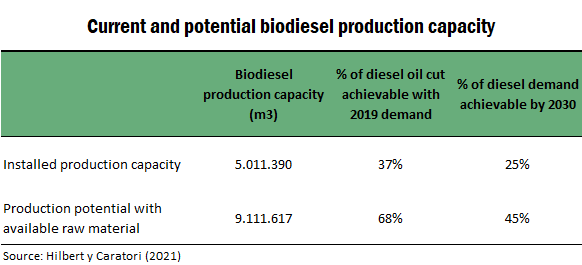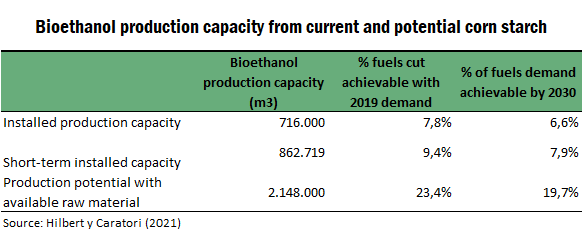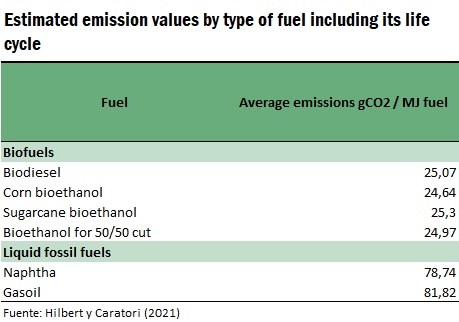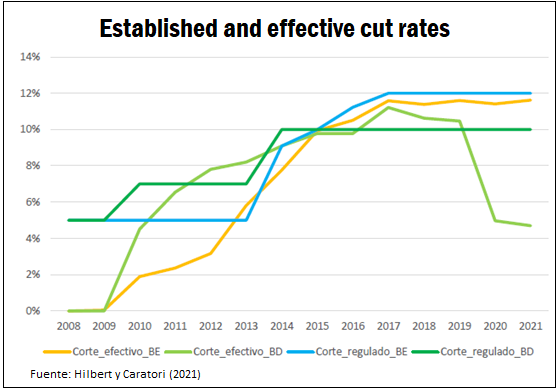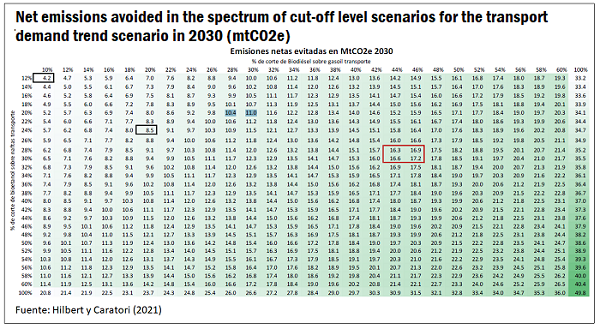Biofuel potential for reducing greenhouse gases emissions in Argentina
Introduction
A growing number of countries asks for carbon-neutrality in a short period of time in historical terms, and the great debate is how to achieve these plans. Within this context, president Alberto Fernandez announced in the Leaders’ Summit on Climate organized in the United States in April 2021 Argentina’s commitment to reach carbon neutrality by 2050. Argentina, on the same line, has increased the ambition of its commitments and in December 2020 submitted its Second Nationally Determined Contribution to the United Nations Framework Convention on Climate Change, establishing an absolute goal of not exceeding 358.8 million tons of carbon dioxide equivalent (MtCO2e) of greenhouse gasses (GHG) by 2030.
With the idea of adding visibility to biofuel’s potential for contributing to decarbonisation, and at the same time contributing to the improvement of the trade balance of the country by generating employment and development on a federal level, specialists Jorge Hilbert (Argentina’s National Agricultural Technology Institute) and Luciano Caratori (Torcuato Di Tella University) wrote and published an insightful report: “The potential of Argentine biofuels to contribute to the fulfilment of Argentina's commitments within the framework of the Paris Agreement”, whose main results we will try to summarize in this article.
How much biodiesel and bioethanol can Argentina produce per year?
According to the report, Argentina has a total production of oils that ranges from 8 to 10 million tons, feasible to be converted into biodiesel. The current installed capacity reaches a total value of 4.4 million tons of biodiesel, which sets a diesel market share floor without capital investments in the short term. If a future expansion was to be considered, with the construction of new plants linked to the modern facilities that Argentina has for this type of grains, a top figure of 8 million tons could be reached.
As for bioethanol, the sector chamber that gathers cornstarch-based plants and the bioeconomy observatory belonging to the Ministry of Agriculture of Argentina express that the current installed capacity is of 716,000 tons. With investments and expansions of the existing plants, that capacity could be enhanced in a very short-term to approximately 863,000 tons.
By combining the current maximum capacity of cornstarch and sugar cane bioethanol, a total of 1,246,000 m3 could be reached, volume equivalent to the one needed for a 13.6% bioethanol cut in fuels on sale levels of 2019, value that could rise to 17.0% by incorporating the short-term installed capacity and, should its potential be explored with the available raw material, it could reach 28.8% by 2030.
A total replacement of fuel for bioethanol in our country would imply the industrialization of only 18.8% of the production of the cereal during the last crop season, allowing to maintain at the same time the availability of a large volume of feed for meat production, domestic consumption and export.
Why moving forward towards a higher utilization of biofuels?
In the study, specialists defined the average emissions of the use of each type of biofuel during all its life cycle (it takes into account CO2 emissions all along the biofuel route, since the generation of the raw material, its transport, the industrial transformation, etc.), in order to later compare it with the average emissions during the life cycle of fossil fuels.
This approximation lets us establish forecasts regarding the benefits of intensifying the use of biofuels through the increase of the cut rate. At the same time, in the study it is estimated the number of emissions that could not be avoided due to the unfulfilment of the cut rate established by law, since that cut was kept below the values established during many periods, mainly in the cut of gas oil with biodiesel.
Deviations in the cuts established by law since 2010 to date resulted in the loss of reduction of greenhouse gasses for 6.54 MtCO2e, which is equivalent to the reductions that should occur in 2 years per that policy according to the cut levels currently required.
At the same time, the authors made a chart of emission elasticity in relation to different cut rates. In their examples, they propose a viable cut policy of 20% biodiesel over gas oil, and 24% bioethanol over naphtha.
For example, a 50% cut of biodiesel in gas oil and a 60% cut of bioethanol in fuels would imply an emission reduction of 23.3 million tons of carbon dioxide equivalent in a scenario of potential demand of the transport sector by 2030. If the replacement was total, a figure of 50 million tons would be reached. Keeping the current cut level of 10% biodiesel and 12% bioethanol would represent 4.2 million, and the forecast scenario of 20% and 24%, about 8.5 million net tons saved.
In terms of gas emissions by the transport sector, a 50% cut of biodiesel in gas oil and a 60% cut of bioethanol in fuels would imply a reduction equivalent to 31% of the sector’s emissions in the forecast scenario. If the replacement was total, a figure of 66% would be reached. The current cut percentage of 10% biodiesel and 12% bioethanol equals to 6% in that horizon, and the forecast scenario of 20% and 24%, to 11%.
Main conclusions
According to the report, the current installed capacity of bioethanol and biodiesel production would allow for a reduction of emissions from Argentina by a magnitude equivalent to between 4.5% and 8.0% of the contribution determined on a national level from Argentina to the United Nations Framework Convention on Climate Change, and it would contribute to reducing between 10% and 19.9% MtCO2 by 2030.
According to the availability of by-products to be converted into biofuels and with an increase in the conversion of raw material into food and biofuels, a potential reduction of emissions from transport between 13.4% and 23.9% could be reached, under a scenario of a 45% cut of biodiesel and 29% of bioethanol. This would imply a 19.9 million tons reduction of carbon dioxide equivalent, which can be compared to the emission of 2.38 million Argentines in a whole year.
We must take into account that the actions coordinated on a national level to comply with the mitigation strategies are followed by various institutions on a global scale. Therefore, the cut volumes of bioethanol and biodiesel indicate the willingness of the countries to comply with the commitments in a very sensitive area like transport in general. Since our country has an important share in land transportation, this measure is registered in comparison to similar regulations by the European Community, destination of a large part of our exports. A carbon frontier is emerging, which implies emission parameters of the life cycle of the traded products. It is also noticeable the future planning of all aspects of emissions in various activities.
The opportunity of decarbonisation and reduction of emissions that can be provided by liquid biofuels is considered very significant with a minimum investment, and a way to generate employment federally distributed among many provinces of the country.
The Energy Commission and the Regional Development Commission of the Rosario Board of Trade have been working hard to achieve a higher use of biofuels. By doing so, we expect to contribute to the reduction of greenhouse gasses emissions and to the guidelines set by the United Nations Framework Convention on Climate Change.
